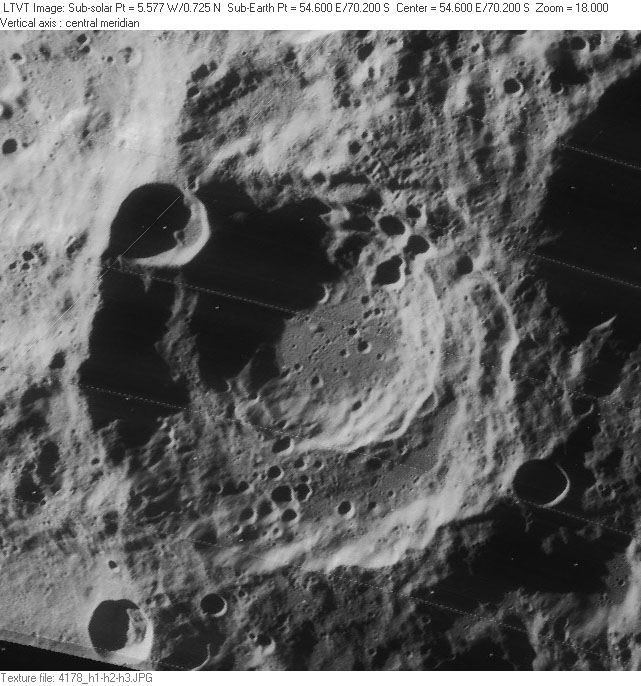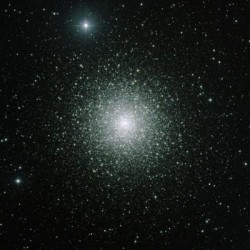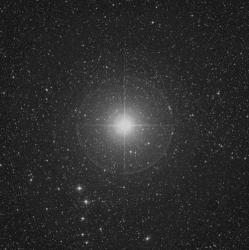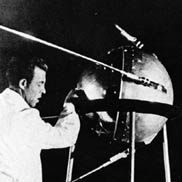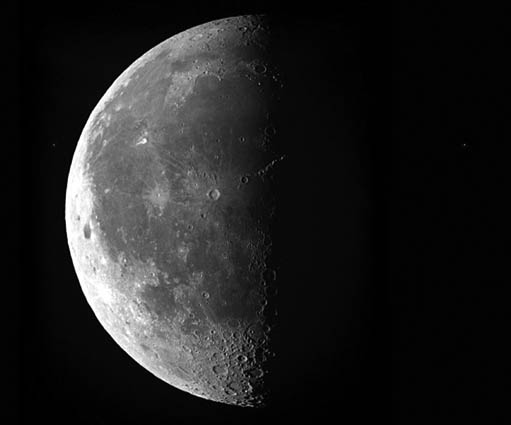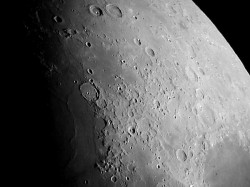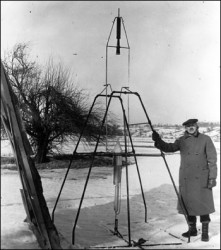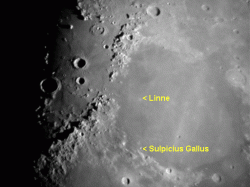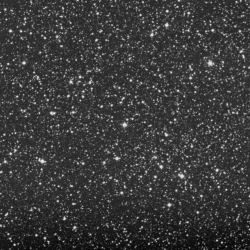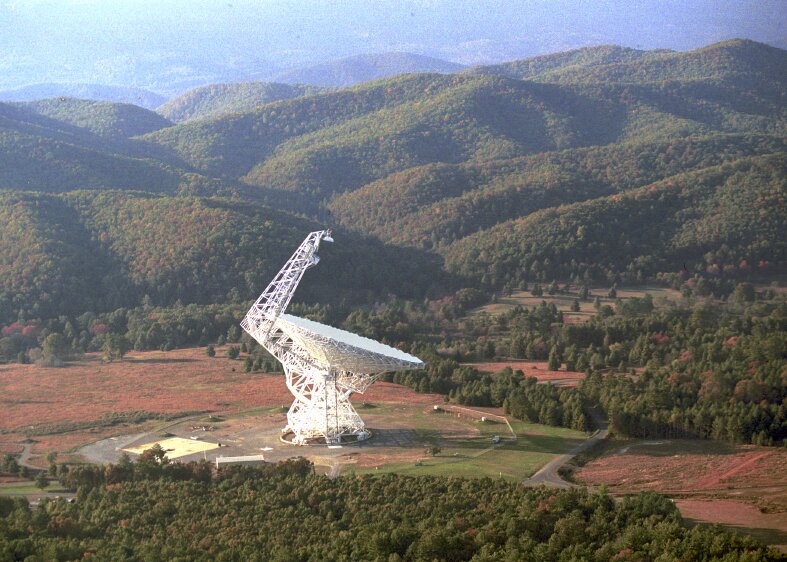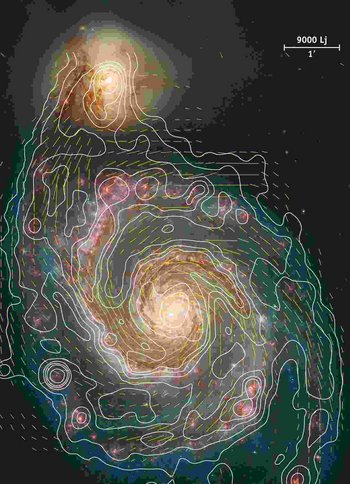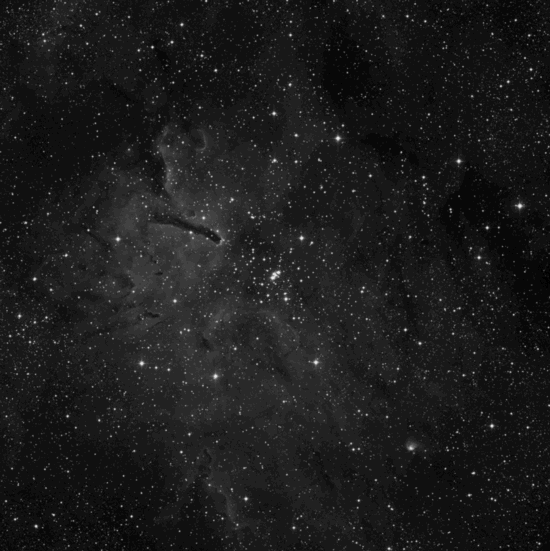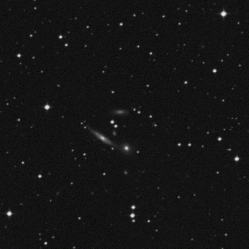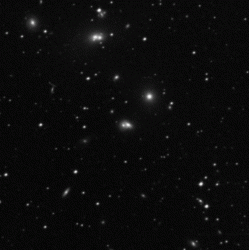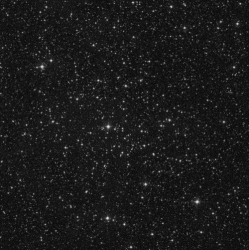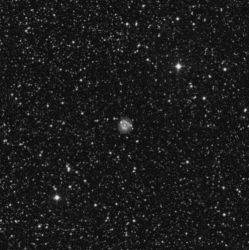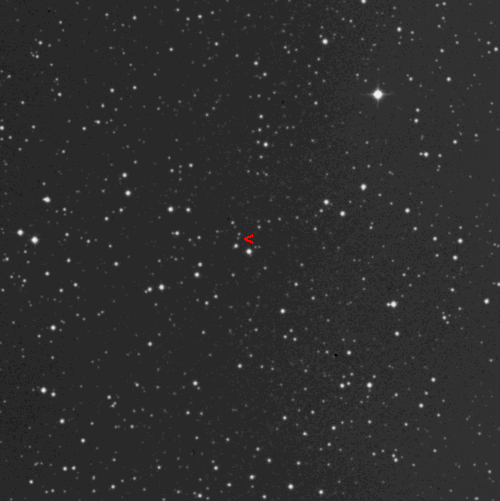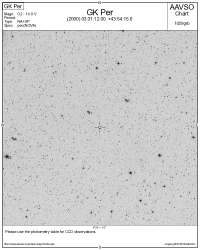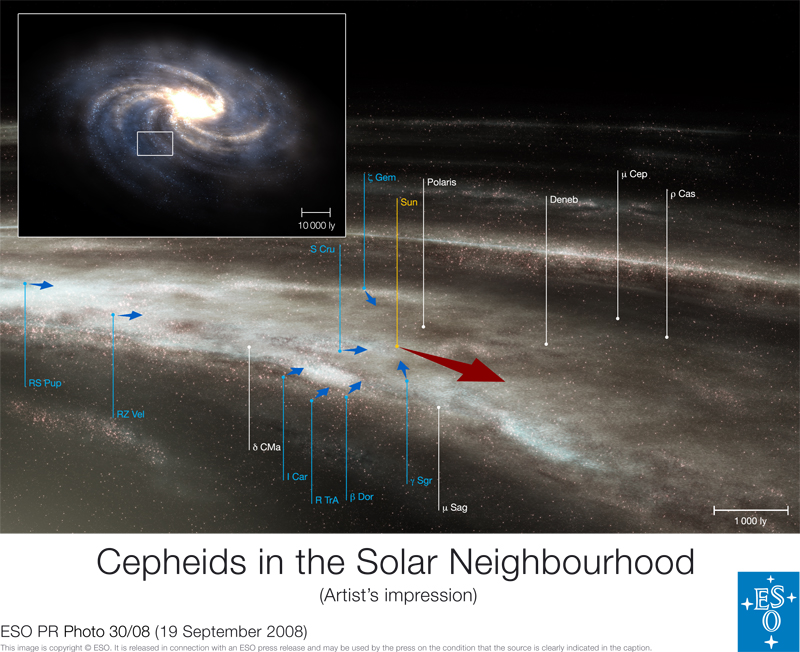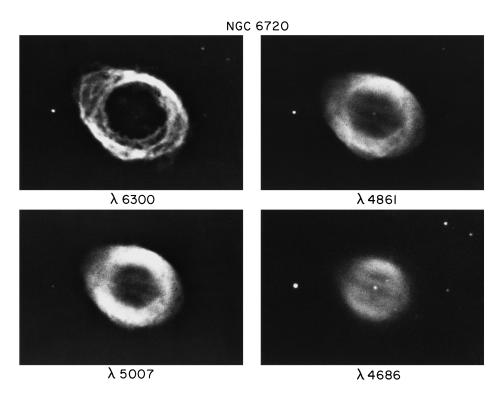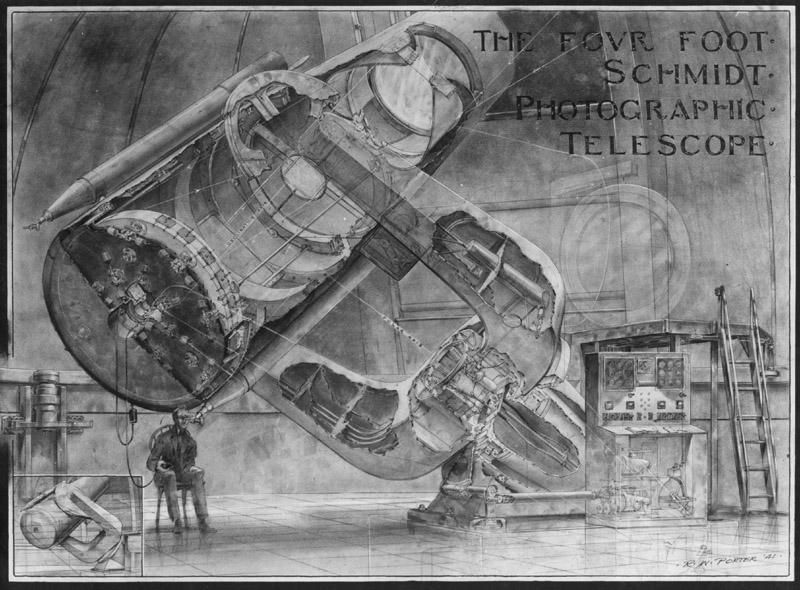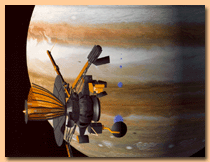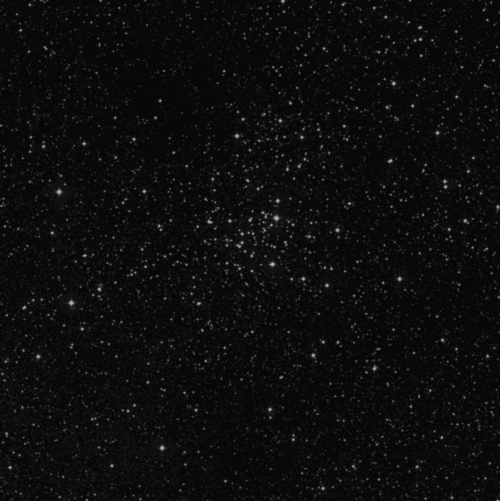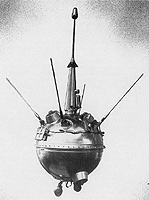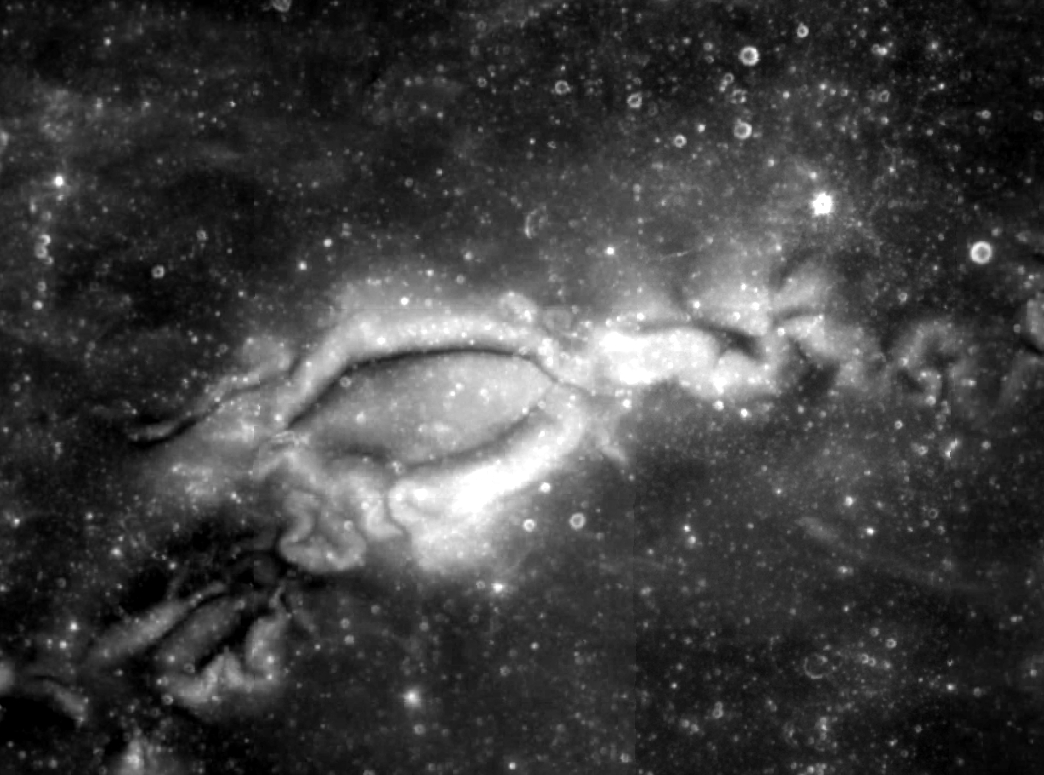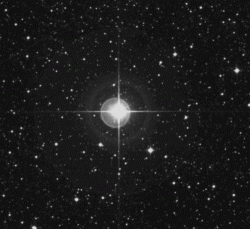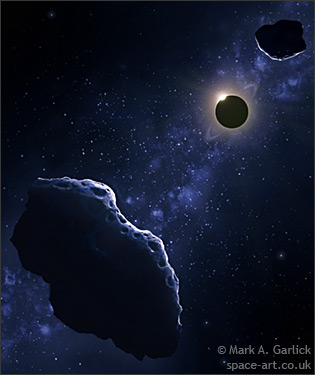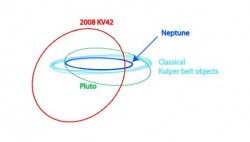Greetings, fellow Skywatchers! It’s Friiiiday! Are you ready for the weekend? Sure, it’s going to be a rather moony affair, but that doesn’t mean we can’t enjoy. Why not take the time to hunt down Neptune, or check out a cool crater like Letronne? We can always shoot for a binary star – or two – or just enjoy the solitary pleasures of being alone with Formalhaut. If you’re up to it, we’ll chase the rays from crater Bessel and try our luck with a new variable star. Don’t spend the last few good nights of the year inside hiding… Let’s rock the night together.
 Friday, October 10, 2008 – Today in 1846, William Lassell was busy at his scope as he made a new discovery – Neptune’s moon Triton. Although our everyday equipment can’t “see” Triton, we can still have a look at Neptune which is also hanging out in tonight’s study constellation of Capricornus less than degree south of the Moon. Try checking astronomy periodicals or many great online sites for accurate locator charts. For some lucky astronomers, it will be an occultation event!
Friday, October 10, 2008 – Today in 1846, William Lassell was busy at his scope as he made a new discovery – Neptune’s moon Triton. Although our everyday equipment can’t “see” Triton, we can still have a look at Neptune which is also hanging out in tonight’s study constellation of Capricornus less than degree south of the Moon. Try checking astronomy periodicals or many great online sites for accurate locator charts. For some lucky astronomers, it will be an occultation event!
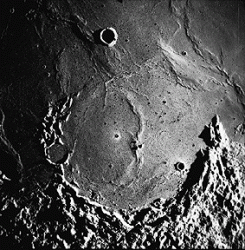 Tonight we’ll let Gassendi be our guide as we head north to examine the ruins of crater Letronne. Sitting on a broad peninsula on the south edge of Oceanus Procellarum, this class V crater once spanned 118 kilometers. Thanks to the lava flows which formed Procellarum, virtually the entire northern third of the crater was submerged, leaving the remaining scant walls to rise no more than a thousand meters above the surface. While this might seem shallow, it’s as high as El Capitan in Yosemite.
Tonight we’ll let Gassendi be our guide as we head north to examine the ruins of crater Letronne. Sitting on a broad peninsula on the south edge of Oceanus Procellarum, this class V crater once spanned 118 kilometers. Thanks to the lava flows which formed Procellarum, virtually the entire northern third of the crater was submerged, leaving the remaining scant walls to rise no more than a thousand meters above the surface. While this might seem shallow, it’s as high as El Capitan in Yosemite.
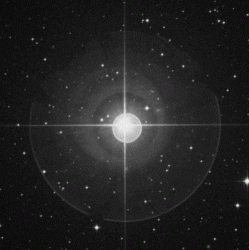 Although tonight’s bright skies will make our next target a little difficult to find visually, look around four fingerwidths southwest of Delta Capricorni (RA 21 26 40 Dec -22 24 40) for Zeta…
Although tonight’s bright skies will make our next target a little difficult to find visually, look around four fingerwidths southwest of Delta Capricorni (RA 21 26 40 Dec -22 24 40) for Zeta…
Also known as 34 Capricorni, Zeta is a unique binary system. Located about 398 light-years from Earth, the primary star is a yellow supergiant with some very unusual properties – it’s the warmest, most luminous barium star known. But that’s not all, because the B component is a white dwarf almost identical in size to our own Sun!
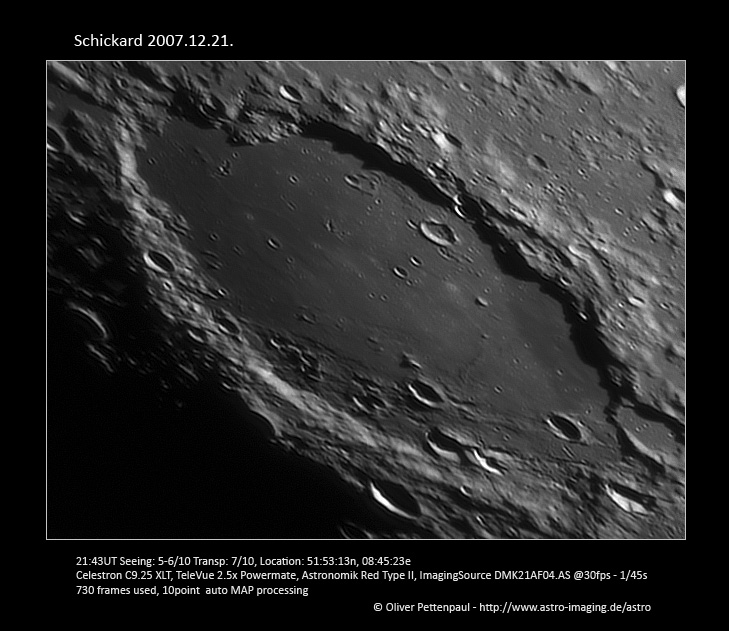 Saturday, October 11, 2008 – If you journey to the Moon tonight, you might return to the southern quadrant along the terminator to have a look at 227 kilometer diameter crater Schickard. You’ll easily note this crater for its smooth gray floor and eye-like appearance. Seen on the oblique, this great crater’s floor is so humped in the middle that you could stand there and not see the crater walls! Be sure to note Schickard for your lunar challenge studies. It’s a fine one!
Saturday, October 11, 2008 – If you journey to the Moon tonight, you might return to the southern quadrant along the terminator to have a look at 227 kilometer diameter crater Schickard. You’ll easily note this crater for its smooth gray floor and eye-like appearance. Seen on the oblique, this great crater’s floor is so humped in the middle that you could stand there and not see the crater walls! Be sure to note Schickard for your lunar challenge studies. It’s a fine one!
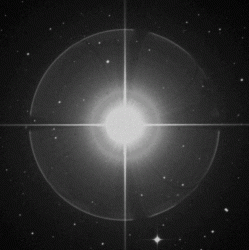 After having looked at the Moon, take the time out to view a bright southern star – Fomalhaut (RA 22 57 39 Dec -29 37 20). Also known as “The Lonely One,” Alpha Piscis Austrini seems to sit in a rather empty area in the southern skies, some 23 light-years away. At magnitude 1, this main sequence A3 giant is the southernmost visible star of its type for northern hemisphere viewers, and is the 18th brightest star in the sky. The Lonely One is about twice the diameter of our own Sun, but 14 times more luminous! Just a little visual aid is all that it takes to reveal its optical companion…
After having looked at the Moon, take the time out to view a bright southern star – Fomalhaut (RA 22 57 39 Dec -29 37 20). Also known as “The Lonely One,” Alpha Piscis Austrini seems to sit in a rather empty area in the southern skies, some 23 light-years away. At magnitude 1, this main sequence A3 giant is the southernmost visible star of its type for northern hemisphere viewers, and is the 18th brightest star in the sky. The Lonely One is about twice the diameter of our own Sun, but 14 times more luminous! Just a little visual aid is all that it takes to reveal its optical companion…
Sunday, October 12, 2008 – Today in 1891, the Astronomical Society of France was established. Exactly one year later in 1892, astronomy great E. E. Barnard was hard at work using the new tool of photography and became the first to discover a comet – 1892 V – in this way! But Barnard’s main photographic interest was in capturing details of the Milky Way. Just as soon as skies are dark again, we’ll have a look at more of Barnard’s work.
 Do you like looking at things which are considered dubious? Then tonight let’s start on the lunar surface and peek at a ray system whose origins are uncertain. You’ll find the bright ring of Bessel almost in the center of Mare Serenitatis, but the ray system is splashed all over it. Did they come from Menelaus on the mare’s edge? Or from as far south as Tycho? Next time the terminator passes over this region, look closely. Do you see the rays now – or just a complicated system of dorsa?
Do you like looking at things which are considered dubious? Then tonight let’s start on the lunar surface and peek at a ray system whose origins are uncertain. You’ll find the bright ring of Bessel almost in the center of Mare Serenitatis, but the ray system is splashed all over it. Did they come from Menelaus on the mare’s edge? Or from as far south as Tycho? Next time the terminator passes over this region, look closely. Do you see the rays now – or just a complicated system of dorsa?
With tonight’s bright skies, it will be difficult to practice any astronomy – or will it? Try re-locating Fomalhaut and drop about a handspan south-southwest into Grus to pick up bright star Beta (RA 22 42 40 Dec -46 53 04).
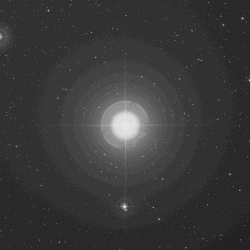 Around 170 light-years from Planet Earth, Beta is the 59th brightest star in the sky and the second brightest star not to have a proper name. It’s an M-type supergiant, but one that is also slightly irregular – changing by about a third of a magnitude in approximately 37 days. Well evolved, Beta is on its way to becoming a Mira type and is only the size of the orbit of Venus. Its loss of mass could mean it has a dead carbon-oxygen core, and studies at infrared wavelengths point to a shell waiting to be expelled.
Around 170 light-years from Planet Earth, Beta is the 59th brightest star in the sky and the second brightest star not to have a proper name. It’s an M-type supergiant, but one that is also slightly irregular – changing by about a third of a magnitude in approximately 37 days. Well evolved, Beta is on its way to becoming a Mira type and is only the size of the orbit of Venus. Its loss of mass could mean it has a dead carbon-oxygen core, and studies at infrared wavelengths point to a shell waiting to be expelled.
In the telescope, you will see Beta also has a visual companion to the south. Although it is unrelated to Beta itself, modern interferometry suggests there may be a true companion star which has yet to be resolved. No matter how you view it, you’ll like Beta for its rich color! Remember its position…
Unitl next weekend and darker skies, have a wonderful journey!
This week’s awesome images are: Apollo 16 image of Letronne – Credit: NASA, Zeta Capricorni – Credit: Palomar Observatory, courtesy of Caltech, Schickard region – Credit: Oliver Pettenpaul, Fomalhaut – Credit: Palomar Observatory, courtesy of Caltech, Bessel Rays – Credit: David Richards and Beta Gruis – Credit: Palomar Observatory, courtesy of Caltech. Thank you so much! Seeing these photographs contributes so much to our understanding of both history and what we’re seeing!



